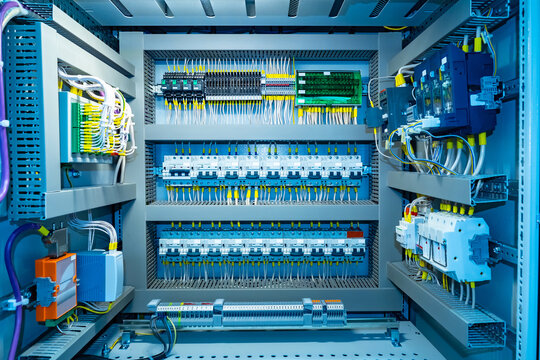
Maintaining Aging Industrial Automation Infrastructures and Factories
As industrial automation systems age, engineers and technicians face the complex task of maintaining legacy equipment while integrating modern technologies. From outdated PLCs and motor drives to worn-out infrastructure components, the challenges are numerous but so are the opportunities. In this guide, we’ll cover practical strategies to help extend the life of aging factory systems, improve efficiency, and prepare for long-term modernization.
Develop a Long-Term Plan
Future proofing starts with a strategic plan. Take time to evaluate your existing automation infrastructure what’s working, what’s obsolete, and what poses safety or performance risks. A good long-term plan should include:
-
Budget forecasts for upgrades or replacements
-
Opportunities for energy efficiency improvements
-
Safety enhancements (e.g., better ventilation, fire suppression systems)
-
Facility renovations, such as improved insulation or flooring
-
Consultation with industrial engineers to assess structural and process improvements
A carefully developed plan though it may take months to prepare can minimize downtime, reduce emergency repair costs, and ensure smooth transitions as new systems are introduced.
Monitor Equipment Performance
Routine monitoring of equipment is vital. Use industrial-grade sensors and monitoring devices to track:
Vibration
Unexpected vibrations often indicate bearing wear, misalignment, or motor shaft imbalance. Eddy current sensors and accelerometers can help detect these issues early.
Temperature
Heat buildup from friction, failed cooling, or lubrication issues can damage components. Infrared temperature sensors and thermal cameras allow you to spot hotspots in motors, drives, and enclosures.
Acoustic Anomalies
Ultrasonic acoustic sensors can detect early-stage failures (like bearing defects) long before conventional accelerometers pick up vibration changes.
Lubrication Health
Lubrication analysis helps identify contamination, viscosity breakdown, or excess metal wear. Establish a routine for sample collection and lab analysis to prevent premature mechanical failures.
Invest in Quality Components
Upgrading to durable, high-performance automation components reduces long-term costs and risk. Look for:
-
Robust PLCs, HMIs, and drives that meet your performance specs
-
Servo systems and control modules with long manufacturer support cycles
-
Components certified to meet safety and environmental standards
Buy from trusted sources like PLG Automation, which specializes in new and legacy industrial automation hardware. Whether you’re sourcing Allen-Bradley controllers, Siemens power supplies, or Fanuc drives, reliable components are key to modernizing without sacrificing uptime.
Upgrade Safety Equipment
Modern safety systems not only protect workers they boost efficiency and compliance. Key upgrades include:
-
Safety PLCs and relay modules (e.g., Allen-Bradley GuardLogix)
-
Emergency stop systems, interlocks, and light curtains
-
High-visibility hazard lighting and improved signage
-
Ergonomic operator stations and physical safeguards
Training is equally essential. Ensure all staff understand lock-out/tag-out procedures, proper PPE usage, and machine safety protocols. Factory modernization should always include a human element.
Establish Preventative Maintenance Programs
Aging infrastructure needs consistent, scheduled maintenance. Key actions include:
-
Following OEM maintenance timelines
-
Logging service intervals in a CMMS (Computerized Maintenance Management System)
-
Auditing older machinery for retrofit opportunities
-
Using downtime wisely to service motors, belts, fans, and sensors
Just like you wouldn’t ignore an oil change light in your car, ignoring preventive maintenance in a factory can lead to costly repairs or worse.
Real-World Reminder: The Cost of Negligence
The 2005 BP Texas City explosion is a grim reminder of what happens when safety and maintenance are ignored. A flawed blowdown drum, failed alarms, and poor system oversight led to a massive explosion, killing 15 and injuring 180 others. While most factories won’t face that scale of risk, even minor negligence can lead to injury, downtime, or lost revenue.
Conclusion
Maintaining aging factory infrastructure doesn’t mean replacing everything. With the right combination of planning, monitoring, upgrades, and proactive maintenance, you can significantly extend the life of your systems while improving safety and performance.
If you’re looking to source reliable automation components from PLCs and sensors to safety modules and power supplies PLG Automation is here to help. We offer expert guidance, fast delivery, and surplus inventory priced below OEM levels.
Contact PLG Automation
Email: sales@plgautomation.com
Phone: 800-906-9271
